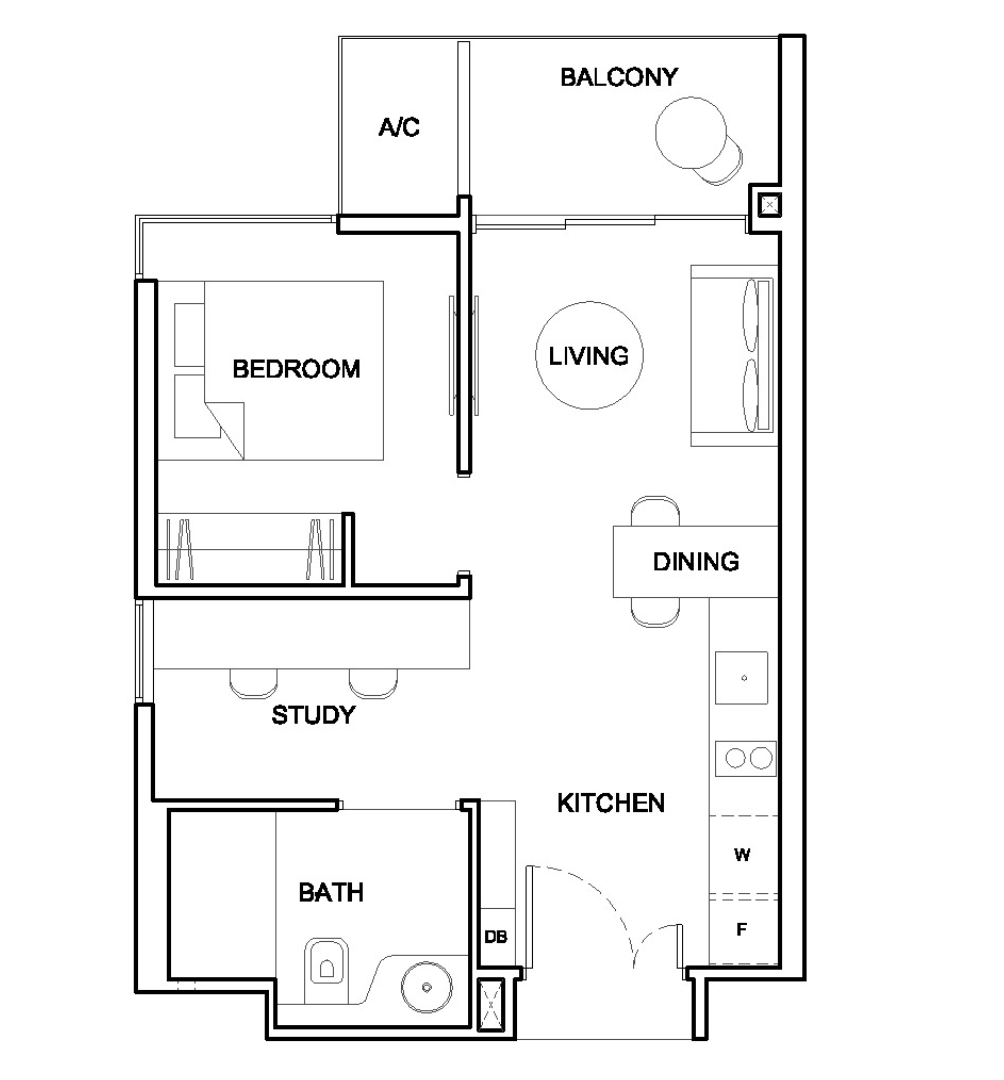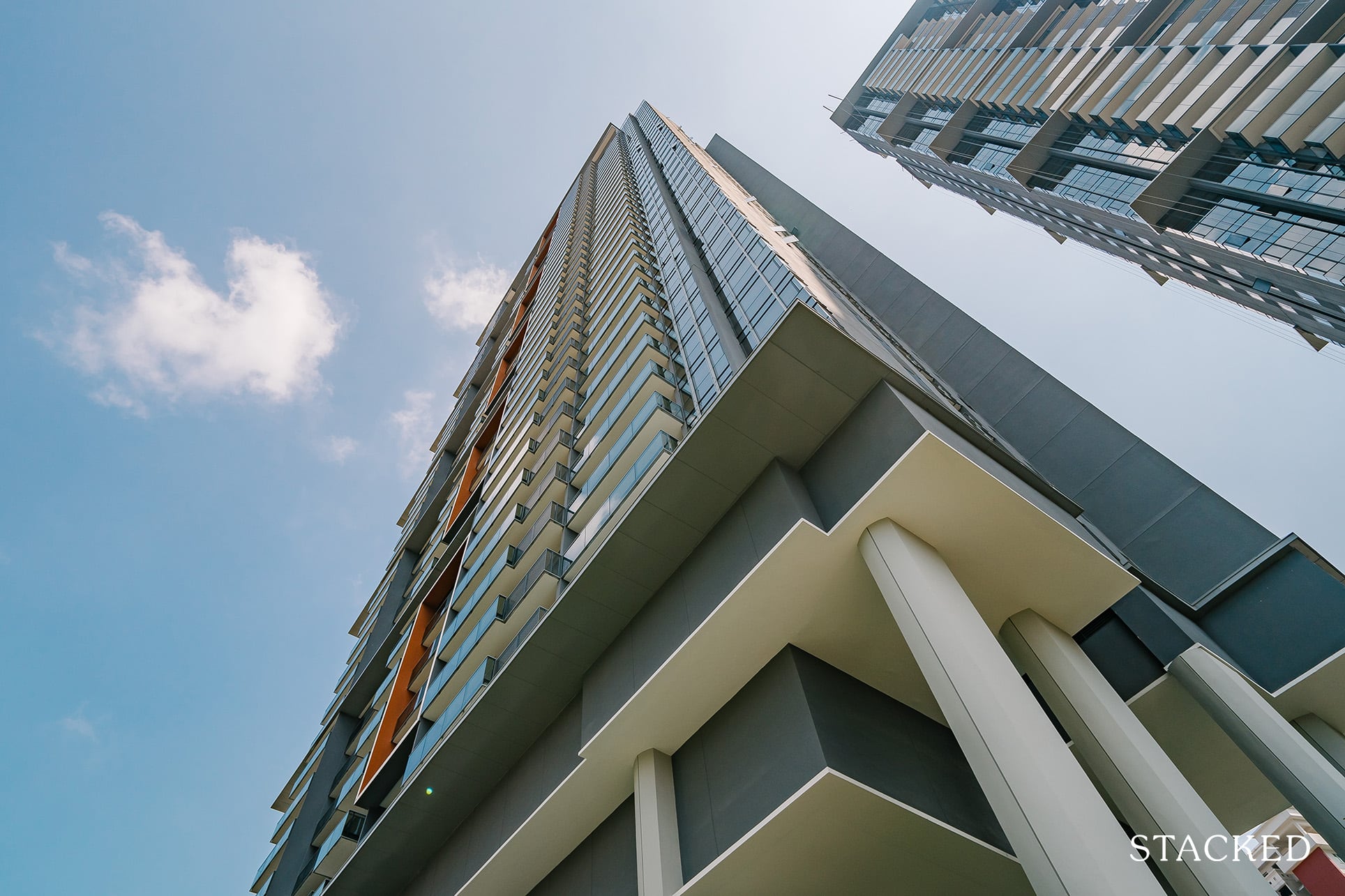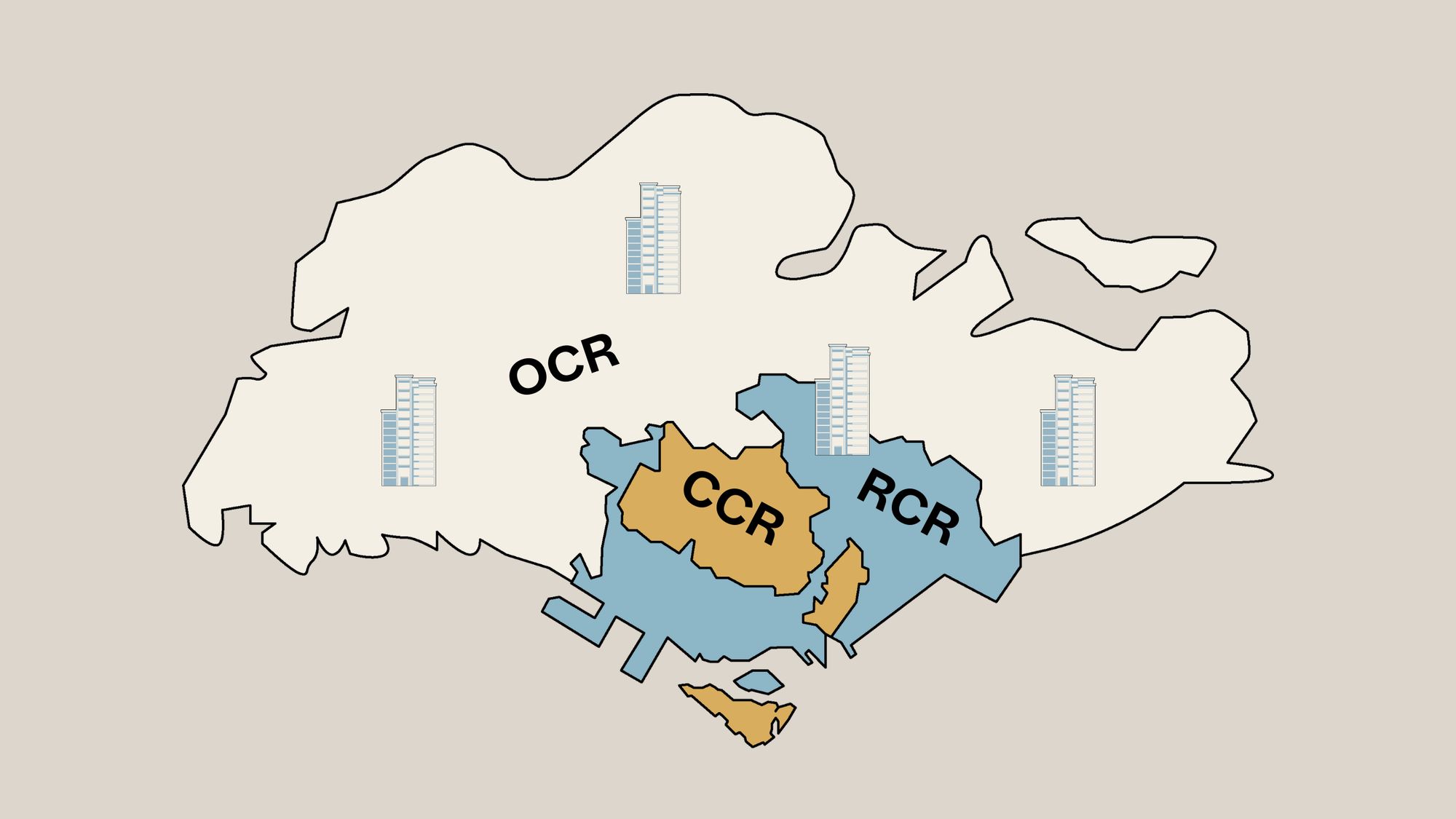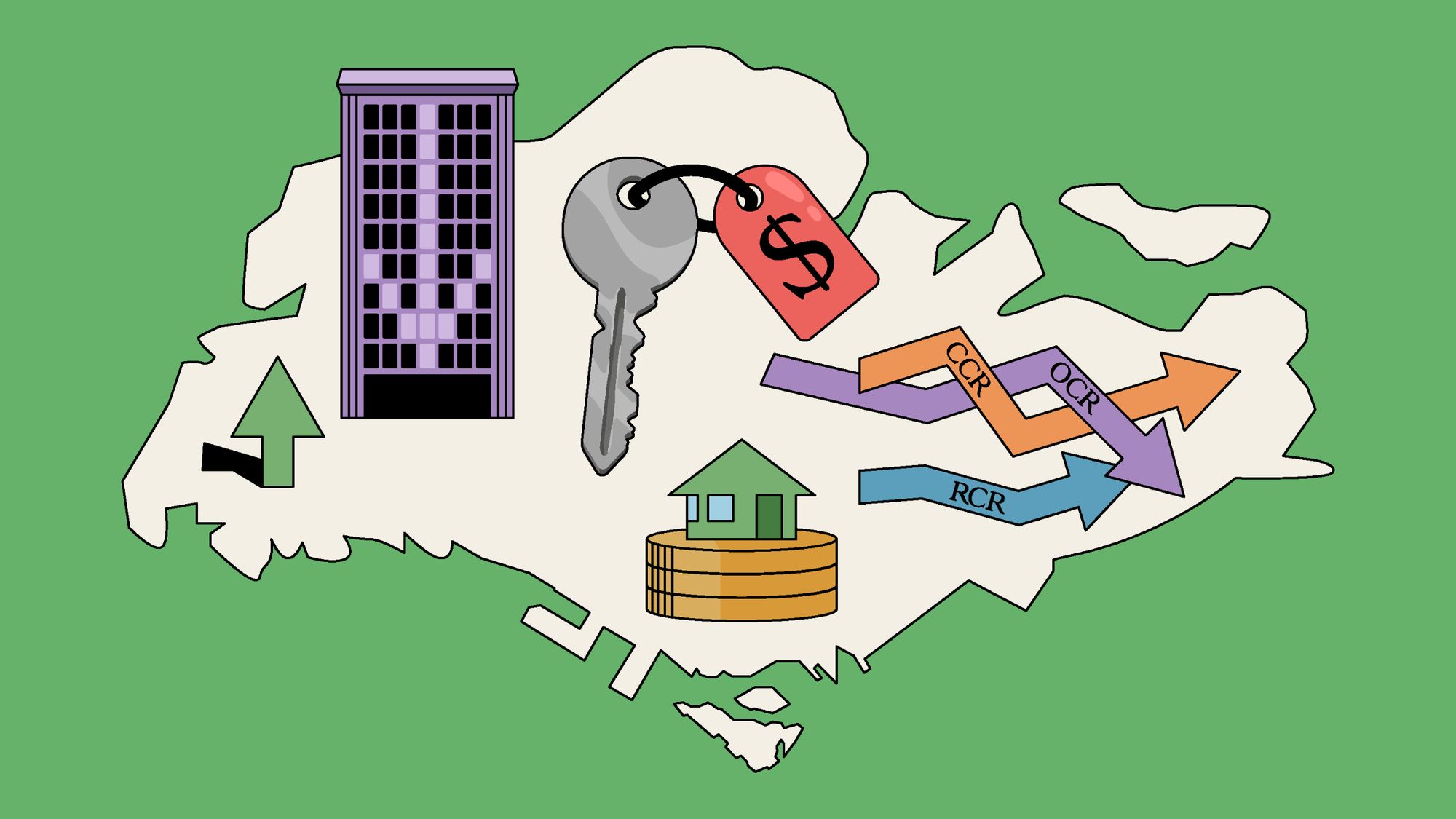Should You Buy A Bigger Or Smaller 1 Bedder As An Investment? The Data May Surprise You

Get The Property Insights Serious Buyers Read First: Join 50,000+ readers who rely on our weekly breakdowns of Singapore’s property market.
A seasoned content strategist with over 17 years in the real estate and financial journalism sectors, Ryan has built a reputation for transforming complex industry jargon into accessible knowledge. With a track record of writing and editing for leading financial platforms and publications, Ryan's expertise has been recognised across various media outlets. His role as a former content editor for 99.co and a co-host for CNA 938's Open House programme underscores his commitment to providing valuable insights into the property market.
As some of our readers may know, one of the things we like to do at Stacked is to test common sayings in the Singapore property market. One such saying is that investors – in particular landlords – should always opt for the smallest one-bedder layout, if their intention is to buy and rent out such a unit. The larger one-bedders, like the 1+Study, may perform worse. But what’s the reason behind this, and is it true? We checked it out:
What’s the theory behind picking the smallest one-bedder layout?
The idea behind this is that, from a tenant or future buyer’s mindset, a one-bedder is a one-bedder, regardless of frills. Having a few extra square feet, or a nook that can be turned into a study, doesn’t change this.

Quite often, the extra “study” is too small to be seriously considered an extra room of any worth; and since the value it adds is so minimal, tenants and future buyers aren’t easily persuaded to pay much more for it. For a landlord, this could mean a 1+Study unit fetches an almost similar rental income to a standard one-bedder in the same project; despite the 1+Study unit having a higher quantum.
Let’s see if any of this holds:
Are standard one-bedders better for gains?
For the following, 114 condo projects were initially considered. These were all projects where there are both one-bedders, and 1+Study units. However, we couldn’t use all of them, as we had to make sure they had transactions of both one-bedders and 1+Study units, to compare gains.
Among those that did have such transactions, here’s what we found:
New-to-resale transactions:
| Project | Not Study | Study | |||
| ROI (%) | Volume | ROI (%) | Volume | Which is better | |
| JADESCAPE | 17.5% | 19 | 13.3% | 3 | REGULAR |
| MAYFAIR GARDENS | 9.9% | 1 | 7.7% | 4 | REGULAR |
| MIDWOOD | 9.7% | 4 | 15.9% | 1 | STUDY |
| PARC ESTA | 20.7% | 20 | 23.0% | 7 | STUDY |
| RIVERFRONT RESIDENCES | 27.2% | 1 | 17.1% | 3 | REGULAR |
| SKY EVERTON | 8.3% | 1 | 12.9% | 1 | STUDY |
| STIRLING RESIDENCES | 19.1% | 12 | 23.1% | 14 | STUDY |
| THE JOVELL | 19.1% | 4 | 14.8% | 3 | REGULAR |
| THE M | 6.6% | 1 | 2.9% | 2 | REGULAR |
| THE TAPESTRY | 13.5% | 28 | 13.0% | 32 | REGULAR |
| TREASURE AT TAMPINES | 18.4% | 15 | 23.1% | 5 | STUDY |
| WHISTLER GRAND | 17.7% | 11 | 16.6% | 11 | REGULAR |
Some of these projects have too few transactions (one unit sold) to draw clear conclusions. But from what we can see, the difference is very marginal.
Standard one-bedroom units have a slightly higher average ROI of 17 per cent compared to 16.3 per cent for 1+Study units. A technical win for standard one-bedders, but a 0.7 percentage point difference is an almost negligible difference.
More from Stacked
Low Floor vs. High Floor: What Transaction Data Reveals About the Premium
Higher-floor units almost always come with a price premium, but whether that premium is justified is less clear once you…
Jadescape, Mayfair Gardens, Riverfront Residences, The Jovell, The M, and The Tapestry all show better performance for standard one-bedders.

On the other hand, Midwood, Parc Esta, Sky Everton, Stirling Residences, and Treasure at Tampines show better performance for 1+Study units.
For Whistler Grand, there was no clear winner.
What if we look at new-to-sub sale transactions?
What if we look at “flipped” units, the ones that were sold before the project reached TOP? In that case, we see the following:
| Project | Not Study | Study | |||
| ROI (%) | Volume | ROI (%) | Volume | Which is better | |
| THE M | 9.4% | 1 | 15.2% | 2 | STUDY |
| LEEDON GREEN | 11.8% | 1 | 4.5% | 2 | REGULAR |
| THE FLORENCE RESIDENCES | 12.2% | 44 | 17.3% | 10 | STUDY |
| STIRLING RESIDENCES | 13.0% | 4 | 23.9% | 2 | STUDY |
| AFFINITY AT SERANGOON | 13.0% | 50 | 14.0% | 59 | STUDY |
| MAYFAIR GARDENS | 13.9% | 2 | 8.2% | 1 | REGULAR |
| PARC ESTA | 16.2% | 30 | 16.9% | 15 | STUDY |
| JADESCAPE | 16.2% | 7 | 24.0% | 1 | STUDY |
| KENT RIDGE HILL RESIDENCES | 17.1% | 16 | 12.6% | 6 | REGULAR |
| PARC KOMO | 17.5% | 2 | 14.9% | 1 | REGULAR |
| RIVERFRONT RESIDENCES | 17.6% | 104 | 15.8% | 49 | REGULAR |
| TREASURE AT TAMPINES | 17.9% | 37 | 21.9% | 9 | STUDY |
| THE JOVELL | 19.1% | 5 | 14.7% | 3 | REGULAR |
| WHISTLER GRAND | 21.2% | 10 | 14.6% | 3 | REGULAR |
This is in line with new-to-resale transactions. Again, standard one-bedders win by a small, almost negligible margin (16 per cent for standard one-bedders, versus 15.3 per cent for those with an added study space).
There isn’t much new to talk about here, except one interesting quirk: Riverfront Residences has the highest number of transactions here, and the standard one-bedder outperformed the 1+Study by a notable 1.8 per cent.
What if we look at rental yields?
For this comparison, there were only seven condos where we could match URA’s rental records for regular/study units, as well as for resale transactions. But let’s do the best we can, and see what we can glean from them:
| Type | 1BR Regular | 1BR Regular Rent | Regular Yield | 1BR Study | 1BR Study Rent | Study Yield | Price Difference | Yield Difference |
| PARC ESTA | $980,699 | $3,544 | 4.34% | $1,181,333 | $3,650 | 3.71% | $200,634 | -0.63% |
| MIDWOOD | $857,222 | $3,025 | 4.23% | $1,050,000 | $3,206 | 3.66% | $192,778 | -0.57% |
| STIRLING RESIDENCES | $1,046,857 | $3,713 | 4.26% | $1,177,286 | $3,865 | 3.94% | $130,429 | -0.32% |
| THE JOVELL | $709,500 | $2,630 | 4.45% | $804,000 | $2,890 | 4.31% | $94,500 | -0.14% |
| SKY EVERTON | $1,308,000 | $4,120 | 3.78% | $1,370,000 | $4,200 | 3.68% | $62,000 | -0.10% |
| RIVERFRONT RESIDENCES | $782,000 | $2,792 | 4.28% | $878,667 | $3,100 | 4.23% | $96,667 | -0.05% |
| THE TAPESTRY | $768,357 | $2,823 | 4.41% | $808,081 | $3,000 | 4.46% | $39,724 | 0.05% |
From the above, we can see that the common agent’s advice mostly pans out. Regular one-bedders do generally have higher rental yields than 1+Study units, with the yield difference ranging from -0.63% to +0.05 per cent. Regular units outperform their 1+Study counterparts in most cases.
Just as the agents often advise, rental income does not rise proportionately to the size of the one-bedder. It seems tenants aren’t paying more for (or at least much more) for the added space; but the landlord definitely pays more for it when buying.
From this, we can conclude the following:
There isn’t much difference in terms of gains, between regular and 1+Study units. If you decide to buy a 1+Study, it’s best to do it only if the extra space is something you’d enjoy. Don’t count on it helping you to fetch a higher price later.
When it comes to rental, however, the yield for a 1+Study unit is almost always lower; and the gap between these and standard one-bedders only starts to narrow when the quantum is very close.
Numbers aside, 1+Study units are also in a bit of an awkward place for tenants: they’re not two-bedders, so there’s no option to take on an extra roommate to split the rent (not without significant discomfort). At the same time, it’s hard to convince a prospective tenant to cough up much more, when there are cheaper standard one-bedders in the same project.
For more on various units and their layouts, or the truth about various sayings in the Singapore property market, follow us on Stacked. If you’d like to get in touch for a more in-depth consultation, you can do so here.
Ryan J. Ong
A seasoned content strategist with over 17 years in the real estate and financial journalism sectors, Ryan has built a reputation for transforming complex industry jargon into accessible knowledge. With a track record of writing and editing for leading financial platforms and publications, Ryan's expertise has been recognised across various media outlets. His role as a former content editor for 99.co and a co-host for CNA 938's Open House programme underscores his commitment to providing valuable insights into the property market.Read next from Property Investment Insights

Property Investment Insights This 21-Year-Old Condo Didn’t Sell Out Initially, Yet Became A Top Performer

Property Investment Insights How A Once “Ulu” Condo Launched In 1997 Became A Top Performer

Property Investment Insights This 698-Unit Ang Mo Kio Condo Launched At The Wrong Time — And Still Outperformed Peers

Property Investment Insights These Resale Condos In Singapore Were The Top Performers In 2025 — And Not All Were Obvious Winners
Latest Posts

Property Market Commentary Why The Singapore Property Market Will Be Different In 2026 — And It’s Not Just About Prices

Editor's Pick 2025 Year-End Review Of The Singapore Property Market: What The Numbers Reveal

Editor's Pick How The HDB Resale Market Performed In 2025, And What It Means For 2026 Prices

Editor's Pick 4 Key Trends Reshaping Singapore’s New Launch Condo Market In 2026

Editor's Pick What I Only Learned After My First Year Of Homeownership In Singapore

Singapore Property News Why More Land Doesn’t Automatically Fix Housing In Singapore

On The Market Here Are The Cheapest 4-Room HDB Flats in Central Singapore You Can Still Buy From $490K

Editor's Pick Should We Buy An Old 99-Year Leasehold Condo To Live In: Will It’s Value Fall When The Lease Runs Out?

Editor's Pick I Reviewed A New Launch 4-Bedroom Penthouse At Beauty World

Property Market Commentary When Renting In Singapore Is The Smarter Move — And Buying Can Wait

Editor's Pick Why Singaporean Families Are Looking At This Landed Enclave From Around $4M

Singapore Property News Lentor’s First Condo Is Complete — The Early Profits May Surprise You

Editor's Pick A Wave Of New HDB Resale Supply Is Coming In 2026: Here’s Where To Find Them

Property Advice We Own A $800K 1-Bedder And A $1.1M 3-Bedder: Is It Possible To Upgrade To A 4-Bedder Condo?

On The Market These Are Some Of The Cheapest 5-Room HDB Flats Left In Central Singapore


